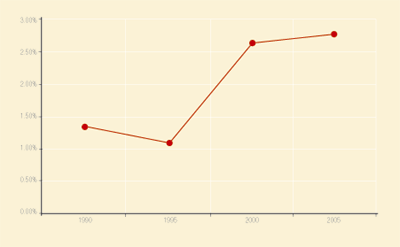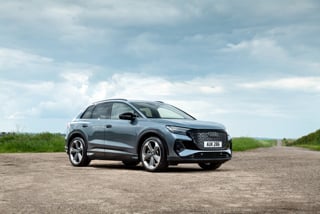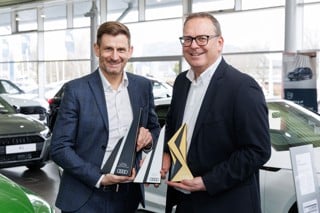However, they fell out of favour in the late 1980s as car companies found that it was easier to make a driveable 24v 3.0-litre than a screaming 2.0 turbo: a bigger multivalve engine had the same 200bhp with none of the lag. Turbos were left to companies who saw them as integral to their brand values: mainly Saab and Subaru. Even Audi restricted them to halo models like the S2.
By 1995 petrol turbos were taking just 1% of the market, although they have crept back up to 2.8% in 2005 (see chart). However, the early promise of the 1970s may soon be fully realised.
Carmakers are preparing for a major shift towards petrol turbos – and the reason is, curiously, diesel engines. While diesels are very good for CO2 emissions, they are expensive to make.
By the time the EU5 emission standards come in, the manufacturing cost of a 2.0-litre diesel may be £800 more than a medium-sized petrol one. Car companies reckon that a smaller turbocharged petrol engine could offer most of the economy benefits of a diesel but at much lower cost.
The cost of the turbo itself has come down, while technology has improved. Anyone used to a modern version would be horrified by an early 80s turbodiesel: if you wanted to overtake, you had to send a letter to the turbo first.
The idea behind modern turbocharging is to downsize the petrol engine in the interests of economy. The ultimate example of this trend is the forthcoming 168 bhp 1.4-litre VW engine that uses turbocharging and supercharging for maximum efficiency. That is a bit OTT for most small cars, but a less extreme 120bhp 1.3-litre could make a lot of 1.6-litre engines redundant.
But surely, you may ask, no-one wants to be seen in a 1.3 after they have owned a 1.6 or 1.8? Carmakers reckon the whole engine size thing will become a thing of the past. It has already happened with diesels: as they have got more efficient, buyers have downsized. The last generation Astra had a 1.7-litre diesel, producing 80bhp while the current one has a 1.3-litre diesel producing 90bhp.
It is no coincidence that few cars still display engine size badges. Mercedes and BMW still use model names with engine sizes built in but, increasingly, they bear little relation to reality: of the C Class petrol range, only C180 and C350 give an accurate clue to the real engine size.
In the future it is not hard to imagine car companies selling on the basis of engine power, not engine size. A car could be sold as a 100bhp or a 130bhp version. Does the buyer need to know the engine size any more than they need to know the bore and stroke dimensions?

After nearly 20 years of disappointment following the launch of the Saab 99 Turbo in 1977, petrol turbos are finally starting to make an impact. Currently more than one-third of all such cars are sold by the VW Group (mostly due to the 1.8 turbo used across all brands). However, many others will join over the next three years as companies seek to lower CO2 outputs without harming performance.

















Login to comment
Comments
No comments have been made yet.